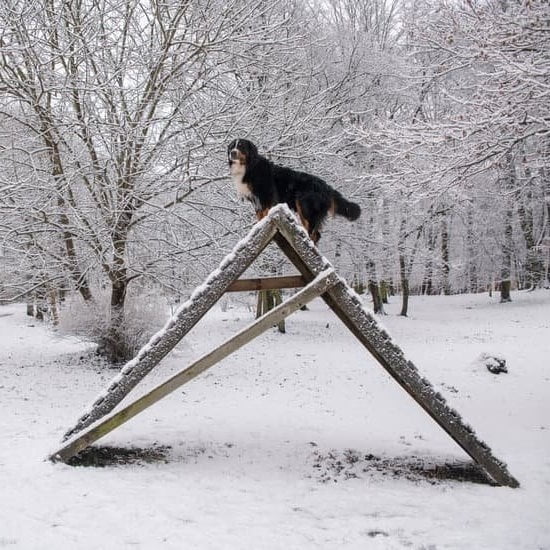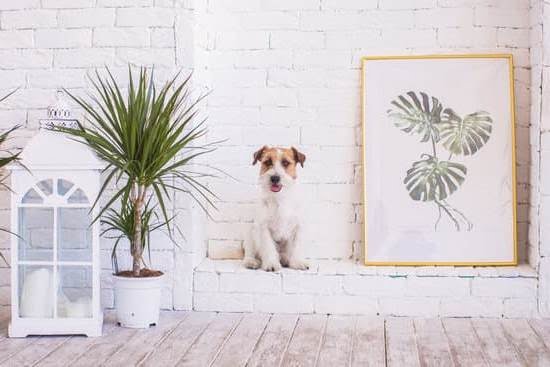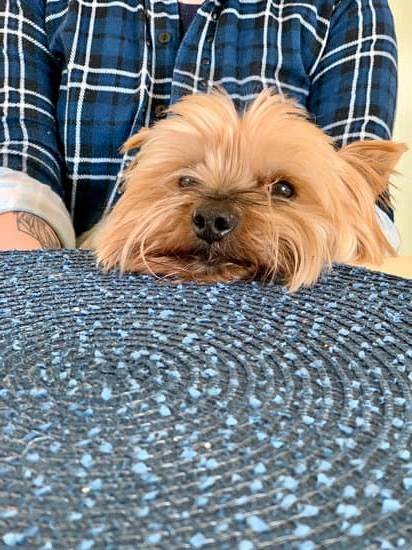Introduction
Training your dog to use a mat to pee is an effective way of teaching them to urinate in designated areas. This will not only help them form healthy bathroom habits, but it can also save you a lot of time and effort cleaning up urine stains on the carpet or furniture. Furthermore, by confining their eliminations to a specific mat or area, this will also help prevent your pet from doing its business someplace unacceptable like inside the house or other living spaces. Training your dog to pee on a mat is an easy process that will require patience and consistency from both you and your pup. With some dedication and practice, your furry friend can master this useful skill in no time. Here are some tips on how to train your dog to pee on a mat:
Choose Your Potty Spot Location
Choose the spot you want your pup to pee on. Consider what type of surface and material you want them to go on, whether it is outside in the yard or inside in a designated section of your home. Make sure the spot is away from any food or water bowls, toys, and other items – this will help your dog determine which areas are for pottying rather than playing. Place a mat, such as artificial grass, newspaper, or puppy pads over the designated spot. If you plan on moving it periodically or replacing it all together occasionally, select something that can easily be replaced or moved anew.
Now that you have chosen a potty spot and placed your mat there, introduce your pup to their new area by taking them there often during times when they need to relieve themselves. Take them out first thing in the morning and right before bedtime; these times tend to be when puppies naturally want to “go”. Praise them when they show signs of wanting to pee. When they do pee successfully on the mat give them a treat and praise them extensively while they finish their business. Eventually they should get into a routine where they seek out their potty spot when nature calls!
Utilize Positive Reinforcement
One method to train your dog to pee on their designated mat is through using positive reinforcement. Positive reinforced strategies include rewarding the desired behavior, such as every time your dog goes on the mat, you can reward them with a treat. This reinforces the idea that going on the mat is a good thing and is associated with something pleasant and enjoyable. You could also use verbal cues like saying “good pup” in an upbeat manner each time they go on their mat. Over time, these positive reinforcement techniques can help encourage your pup to use the mat instead of other places in the house you don’t want them pooping or peeing.
Another form of positive reinforcement that can be used while training your dog to pee on their mat is clicker training. Clicker training utilizes a small device known as “clicker” which emits a distinct clicking sound that serves as a marker for when your pup has done something right. This sound acts as an association to good behavior and typically rewards come after that sound has been made. For example, you can press the clicker whenever your pup successfully goes on their designated potty spot and then offer them treats afterwards for further reinforcing this desired behavior.
Use Command Words to Enhance Training
Command words are an important tool to ensure your dog’s successful training when teaching them how to pee on the mat. Before you start, make sure you are in a quiet and calm atmosphere. Make sure your pup is relaxed, then give them the command word “Go potty” or something similar. Point towards the mat with a treat in your hand and say the command word again. Every time your pup does what you ask, praise them and reward with a treat. Repeat this process several times, increasing training time each day until your pup gets accustomed to peeing on their mat when given the command. Don’t use physical punishment such as pulling their collar or tapping their nose if they do not follow commands; instead, be patient and motivating. Use consistent, positive reinforcement like verbal praises for good behavior and treats for successfully following commands to help increase success rates of learning new skills. Finally, don’t forget to take Frequent potty breaks during training since providing enough opportunities is critical for any successful dog traininging program!
Tips for Establishing Patience and Consistency
When training a dog to pee on a mat, it is important to establish patience and consistency throughout the process. Patience is needed because the dog might take a bit of time to get used to this new behavior, while consistency creates habits that last rather than fleeting ones. Here are some tips for establishing patience and consistency when training your pup:
1. Start with small steps – Begin by teaching your pup the basics such as sit, stay, and come. As he masters these simple commands, gradually introduce commands for going on the mat in increments until he is able to go directly on command.
2. Reward positive behavior – Whenever your pup pees in the correct spot or near it, reward him with treats or verbal praise so he knows he has done something right. As he progresses throughout his training, offer fewer rewards so that going on the mat becomes an expected action rather than one with a reward reward attached.
3. Stay consistent – While training your pet is exciting and rewarding work, sometimes life gets busy and interruptions become more frequent than usual; try as much as possible to maintain consistent sessions every day as this helps build good habits more quickly than inconsistent behaviors do. Additionally, use consistent phrases and praise during potty time each time you train him so that can identify what is being asked of him easier.
4. Don’t punish – If there are accidents during training session make sure to remain calm; punishing or scolding won’t help any mistakes of past sessions be corrected but confusing the pup instead . Address behavioral mistakes calmly and remove immediately from mishaps without further disciplining them after they have left the area.
Track Your Progress and Make Modifications
When you are training your dog to do something, especially a complex task like peeing on a mat, it is important to track your progress and make modifications if necessary. This means setting goals for yourself and your pup, tracking each of your successes and failures, and adjusting your training plan accordingly.
At the beginning of the training period, start by setting small goals that are achievable and which will allow you to measure the results easily. Be sure to keep records of each step in the process so that you can recognize when your pet is making progress. If they take steps backwards or just aren’t doing what you would like, modify the plan as needed.
Continue this process until both you and your pup understand the goal and can complete it successfully with minimal difficulty. Don’t be discouraged if things become difficult; simply adjust your plan, focus on positive reinforcement methods such as treats or verbal praise, and keep moving forward slowly but surely! With plenty of patience and persistence, you will be able to successfully train your dog to pee on their mat in no time!
Gradually Decrease the Need for Potty Mat
Once you have trained your dog to pee on the potty mat, you can gradually decrease the need for the mat. Begin by placing the potty mat in a more inconvenient spot such as behind some furniture or tucked away in an area with less traffic. This will encourage your pup to start holding their bladder until it’s convenient to get to the designated potty spot. Reward your pup when they are successful in making it there in time by praising and offering treats. You can then slowly increase the amount of space between the house and its designated potty spot so that eventually the mat isn’t necessary anymore. Whenever possible, take your pup outside if you see them sniffing around looking for a place to go – this will help foster good habits and keep accidents from occurring. Be sure to always be patient during training, as success often requires taking small steps each day towards achieving your end goal.
Conclusion
When your dog has successfully peed on the mat, it’s important to reward and celebrate their success! Make sure you praise them with a calm but excited voice, talk to them affectionately, give them a treat and make physical contact such as petting or cuddles. Doing so will build their confidence and encourage them to keep peeing on the mat even if you are not around. Additionally, be sure to take time each day dedicated solely to dog training as this will help reinforce the positive behavior. With patience and consistency, your dog will eventually gain full control over their bladder and urinating habits.

Welcome to the blog! I am a professional dog trainer and have been working with dogs for many years. In this blog, I will be discussing various topics related to dog training, including tips, tricks, and advice. I hope you find this information helpful and informative. Thanks for reading!





